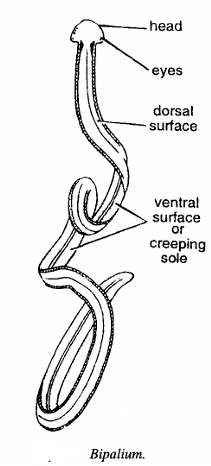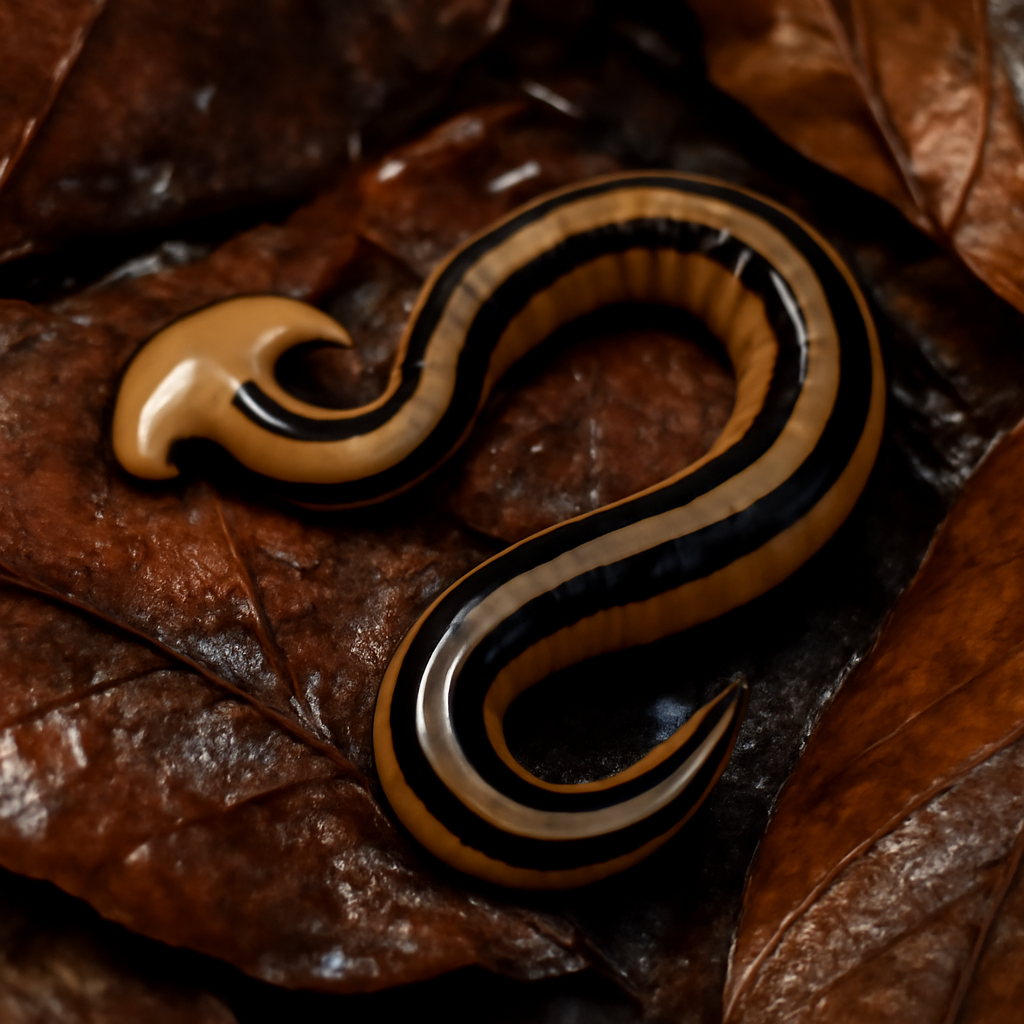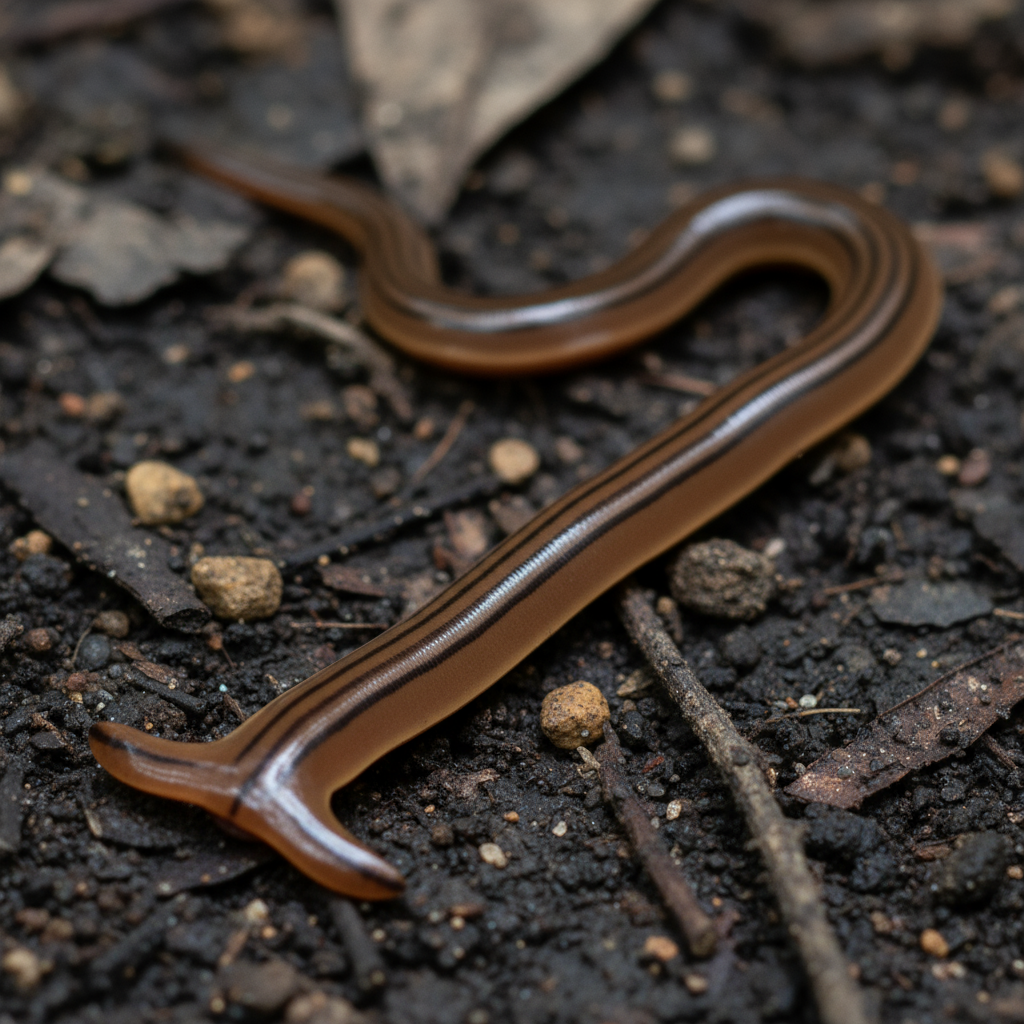Introduction
Bipalium is a genus of large, terrestrial predatory flatworms often called hammerhead worms or broadhead planarians due to their distinctive, expanded head shape. These land planarians are widely recognized for their predatory habits and invasive potential, making them remarkable subjects in ecological and biological studies. Bipalium species are notorious for preying mainly on earthworms and possess unique physiological traits that allow them to thrive in human-influenced and wild environments worldwide.
Classification of Bipalium
- Kingdom: Animalia (Multicellular, heterotrophic organisms with differentiated tissues.)
- Phylum: Platyhelminthes (Bilaterally symmetrical, dorsoventrally flattened acoelomates)
- Class: Rhabditophora (or Turbellaria, in obsolete classifications) – Free-living flatworms with ciliated epidermis.
- Order: Tricladida – Flatworms with a three-branched gut.
- Family: Bipaliidae -Land planarians with expanded, distinctively shaped heads (hammerhead).
- Genus: Bipalium -Terrestrial, predatory worms with broad, spade-like heads and highly developed creeping soles

Habit and Habitat
Bipalium species are terrestrial and prefer moist, shaded environments with high humidity levels. They are commonly found beneath rocks, logs, leaf litter, garden debris, and in plant pots. During daylight hours, hammerhead worms avoid light and shelter in cool, humid microhabitats, becoming most active at night and after rainfall. Habitats also include urban gardens, agricultural fields, forests, and sometimes caves. Their requirement for moisture limits their distribution to regions with sufficient humidity or human-modified microhabitats that retain water. The creeping sole, a ciliated region on the ventral body, assists their smooth locomotion across surfaces.
Geographical Distribution
Native to Southeast Asia, Bipalium species have achieved a cosmopolitan distribution through global horticultural trade. They are now recorded on every continent except Antarctica, with notable prevalence in North America, Europe, Australia, Africa, and parts of Central and South America. The most common species, Bipalium kewense, is frequently observed in gardens, greenhouses, and urban environments, thriving particularly in tropical and subtropical regions. Recent studies indicate continual northward spread, as these planarians are increasingly recorded in temperate zones, often associated with imported plants. Their invasive success is attributed to both resilience and reproductive adaptability.

General Characteristics
- It is one of the largest land planarians measuring 20 to 50 cm in length.
- It was discovered in the green houses of the knew gardens in U.K. by Moseley (1878).
- Animal consists of an expanded lunate head and cylindrical long body.
- Numerous eyes are present on the margin of the head and sides of the body.
- Purple, black, yellow, olive and grey coloured stripes are very distinct near the neck. Body remains twisted.
- This Planaria has stripes over the dorsal surface also and a creeping sole on the ventral surface.
- Reproduction generally asexual. It never becomes sexual in temperate climate and it propagates by fragmentation.
- Bipalium adventium breeds sexually.
- If subjected to desiccation, it recovers water loss, provided the loss does not exceed, 45% of its weight.
- Body Form: Elongated, soft-bodied, often exceeding 20 cm in length in living specimens; capable of extreme stretching.
- Head Plate: Distinctively expanded, crescent or spade-shaped head, sometimes with lateral auricles; the head plate may show varied coloration and markings.
- Coloration: Dorsal surface varies from light brown, ochre, or yellow with dark, longitudinal stripes (typically five in B. kewense); ventral surface is lighter, especially over the creeping sole.
- Locomotion: Movement facilitated by the creeping sole and ciliary action.
- Digestive System: Mouth located mid-ventrally; pharynx can be everted for external digestion; branching gut enables absorptive nutrition.
- Feeding Habits: Carnivorous, preying mainly on earthworms and sometimes mollusks or soft-bodied insects; predators use sticky secretions and muscular action to subdue prey.
- Reproduction: Hermaphroditic, capable of both sexual reproduction (egg capsules) and asexual reproduction (fragmentation); many species primarily reproduce via fragmentation in non-native regions
- Sensory Organs: Simple sensory system; head shape and cilia aid environmental perception.
Special Features
- Head Morphology: The expanded, hammer-like head plate of Bipalium is a distinguishing adaptation that enhances sensory detection and prey capture efficiency.
- Regeneration: Like many flatworms, Bipalium species possess strong regenerative capacity, enabling them to regrow lost body parts after fragmentation or injury
- Chemical Defense: Notably, some Bipalium species produce tetrodotoxin, a potent neurotoxin that aids in subduing prey and deters potential predators. This makes hammerhead worms among the few terrestrial invertebrates to possess such biochemical defenses.
- Asexual Fragmentation: A significant reproductive strategy allowing rapid population expansion and resilience, especially in invaded ranges. Detached posterior fragments regenerate into complete individuals within weeks.
- Adaptability: Ability to exploit human-modified habitats, diversity in reproduction, and resistance to environmental stresses contribute to their invasive success.

Identification
Identification of Bipalium species is based on:
- Distinctive, crescent or spade-shaped head plate, often broader than the body
- Body color and stripe pattern; B. kewense commonly shows five black or grey dorsal stripes
- Head and body length; some species exceed 10–12 inches in length
- Behavioral traits: slow gliding locomotion, negative phototaxis, predatory response to earthworms.
- Habitat association: presence in moist, shaded locations or near human habitation.
- Microscopic examination: reproductive anatomy and presence/absence of accessory ducts in copulatory organs.
Field identification is aided by high-quality images of dorsal and ventral surfaces, due to variability among species.
Ecological and Environmental Importance
Bipalium plays a dual ecological role: as top invertebrate predators, they contribute to regulating populations of earthworms and other soil organisms, affecting nutrient cycling, soil structure, and ecosystem dynamics. In regions where Bipalium is invasive, their predation can harm native earthworm communities, reducing soil fertility and altering local biodiversity. The presence of tetrodotoxin makes them significant in predator-prey networks. Hammerhead worms also serve as bioindicators of moist, disturbed habitats but pose challenges when introduced into new regions, sometimes negatively impacting lawns, gardens, and restoration projects.
References
- https://en.wikipedia.org/wiki/Bipalium
- https://en.wikipedia.org/wiki/Bipalium_kewense
- https://animaldiversity.org/accounts/Bipalium/classification/
- https://www.inaturalist.org/taxa/64224-Bipalium
- https://extension.psu.edu/hammerhead-flatworms-and-other-land-planaria-of-eastern-north-america/
- https://www.jcu.edu.au/discover-nature-at-jcu/animals/miscellaneous-fauna/bipalium-kewense
- https://www.brant.ca/en/recreation-and-parks/hammerhead-worm.aspx
- https://edis.ifas.ufl.edu/publication/IN206
- https://onlinelibrary.wiley.com/doi/10.1111/ddi.13489
- https://pmc.ncbi.nlm.nih.gov/articles/PMC5969052/
- https://www.invasivespeciesinfo.gov/terrestrial/invertebrates/hammerhead-worm
- https://www.gbif.org/species/2502938
- https://tsusinvasives.org/home/database/bipalium-kewense
- https://content.ces.ncsu.edu/terrestrial-flatwormshammerhead-worms
- https://pmc.ncbi.nlm.nih.gov/articles/PMC8815365/
- https://australian.museum/learn/animals/worms/shovel-headed-garden-worm/
- https://checklist.pensoft.net/article/82587/download/pdf
- https://resources.ipmcenters.org/resource.cfm?rid=23878
- https://naturemapr.org/species/1735
